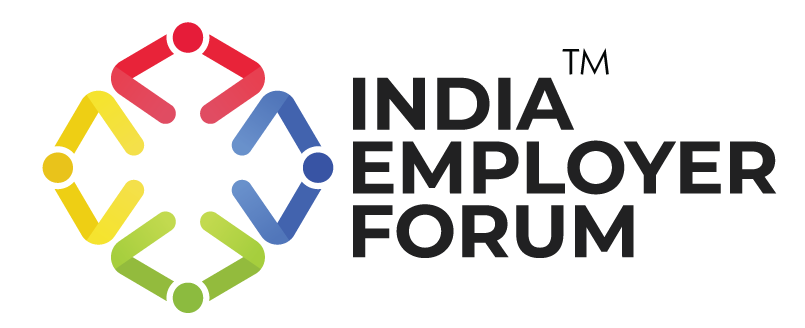Shadow AI refers to the unsanctioned use of artificial intelligence tools by employees in their everyday workflows. While often driven by a desire to boost efficiency or creativity, the adoption of shadow AI poses significant risks for employers — including potential data breaches, compliance violations, and reputational damage. This article examines the growing prevalence of shadow AI in the workplace, highlights the associated risks of shadow AI, and provides actionable recommendations for employers to strengthen governance, enhance shadow AI detection, and promote responsible AI use that supports sustainable organizational growth.
The Current Landscape of Shadow AI at Work
Recent data highlights the rapid pace of shadow AI adoption across workplaces. According to Cybernews, approximately 59% of U.S. employees use AI tools at work that have not been approved by their employers. Similarly, nearly 90% of IT leaders express concern about the growing prevalence of shadow AI within their organisations.
The risks are amplified by unsafe usage patterns—around 57% of enterprise AI users admit to entering high-risk or confidential data into public generative AI tools, such as ChatGPT, Copilot, and Gemini, thereby increasing the likelihood of data breaches. A Microsoft study released in October 2025 found that 71% of UK employees rely on unauthorised consumer AI tools to improve productivity, indicating the prevalence of shadow AI in daily workflows.
Further, Zendesk reports a surge in the use of public GenAI agents and an upward trend in shadow AI activities, particularly among customer support, product, and marketing teams. Notably, unauthorised AI use was found among both executives and managers, highlighting the widespread presence of shadow AI risks across all organisational levels.
Shadow AI Risk at Work
A recent survey by Komprise found that 44% of organisations experienced sensitive data leaks resulting from the unauthorised use of AI tools. Such incidents not only compromise data integrity but also expose businesses to serious legal and financial consequences, especially when confidential information crosses borders or is processed through unverified external infrastructures. These risks signify the urgent need for effective shadow AI detection and governance mechanisms.
The lack of visibility around shadow AI usage makes it difficult for organisations to maintain proper audit trails, ensure regulatory compliance, and uphold transparency in AI operations. This opacity can erode stakeholder trust and damage brand reputation. Furthermore, when different teams rely on varied and unapproved AI tools, the occurrence of inaccurate or biased outputs increases, causing disruption in critical business decisions.
Private AI Solutions for Data Security: Infosys & Honeywell
Enterprises worldwide are increasingly turning to private, in-house AI models to safeguard sensitive information and intellectual property. Instead of relying on public LLMs such as ChatGPT or Gemini, they are deploying secure, domain-specific models within controlled on-premises or cloud environments. These systems are enhanced with guardrails, data-loss prevention (DLP) tools, and retrieval-augmented generation (RAG) frameworks that prevent confidential data from being exposed or misused. Alongside these technical safeguards, companies are implementing robust AI governance policies, continuous auditing, and human-in-the-loop reviews to ensure compliance, accountability, and ethical oversight. This strategic shift allows organizations to balance innovation with data security, maintaining the efficiency and insight of generative AI while minimizing regulatory and reputational risks.
Infosys and Honeywell illustrate how enterprises are building in-house AI to protect sensitive data. Infosys leverages private domain-specific LLMs combined with retrieval-augmented systems and runtime guardrails to ensure client IP remains secure while enabling generative AI solutions. Honeywell, particularly in industrial contexts, develops controlled AI agents that operate within trusted environments to manage operational data and safety-critical processes, avoiding exposure to public models. Both cases highlight the shift toward secure, private AI deployments that balance productivity with data protection.
How to Mitigate Shadow AI: Insights for Employers
1. Develop a Transparent AI Tool Inventory and Responsible AI Policy
To effectively mitigate shadow AI risks, employers must first establish visibility into AI usage across the organisation. Deploy processes or tools capable of detecting unauthorised AI usage — including SaaS generative AI applications, API calls, and browser extensions. Maintain a central repository that tracks all AI tools in use, along with user details, purposes, and shared data. Classify these AI tools by their level of risk to prioritise governance efforts efficiently.
In parallel, develop a Responsible AI Policy that clearly defines which tools are approved, describes the sensitive data usage, and specifies the required approval workflows. Regularly update this policy in line with emerging AI technologies and ensure it is communicated within the organisation. This approach encourages accountability, transparency, and responsible AI use across all teams.
2. Provide Authorised AI Tools and a Safe Environment
A key step in reducing shadow AI adoption is offering secure, enterprise-approved alternative AI tools that meet employees’ evolving needs. Understand the functional requirements of different teams—such as marketing, R&D, product development, and operations—and provide them with authorised AI tools integrated into their workflows.
Create a controlled sandbox environment where teams can safely experiment with new AI tools and features under human oversight. This promotes innovation while maintaining data security, enabling employees to explore AI’s potential without shifting to unsanctioned solutions.
3. Measure Key Metrics and Monitor Progress
To ensure continuous improvement, track key performance indicators (KPIs) related to shadow AI detection and compliance. These may include the percentage of employees using unauthorised tools, the ratio of registered to unregistered AI applications, and the frequency of data-loss incidents.
Conduct periodic audits and policy reviews to evaluate the effectiveness of governance measures. Gather feedback from teams on accessibility, usability, and approval processes for AI tools. This ongoing assessment helps refine organisational strategies, ensuring alignment between responsible AI governance and business objectives.
4. Convert Shadow AI into an Opportunity
While shadow AI poses compliance and security risks, it also reflects employees’ willingness to embrace AI for greater efficiency and innovation. Instead of treating it solely as a threat, organisations can convert this opportunity into structured adoption.
Ultimately, recognising and addressing shadow AI risks and opportunities in tandem helps organisations foster a culture of trust, innovation, and responsible AI use—driving sustainable growth for both the business and its workforce.
As AI becomes an integral part of modern workplaces, the rise of shadow AI highlights both the desire of employees to innovate and the urgent need for responsible usage. Employers should recognise that mitigating shadow AI adoption isn’t about restricting innovation, but about enabling it securely. By implementing clear governance policies, providing authorised AI tools, and fostering a culture of transparency, organisations can turn shadow AI risks into opportunities for sustainable business growth.






